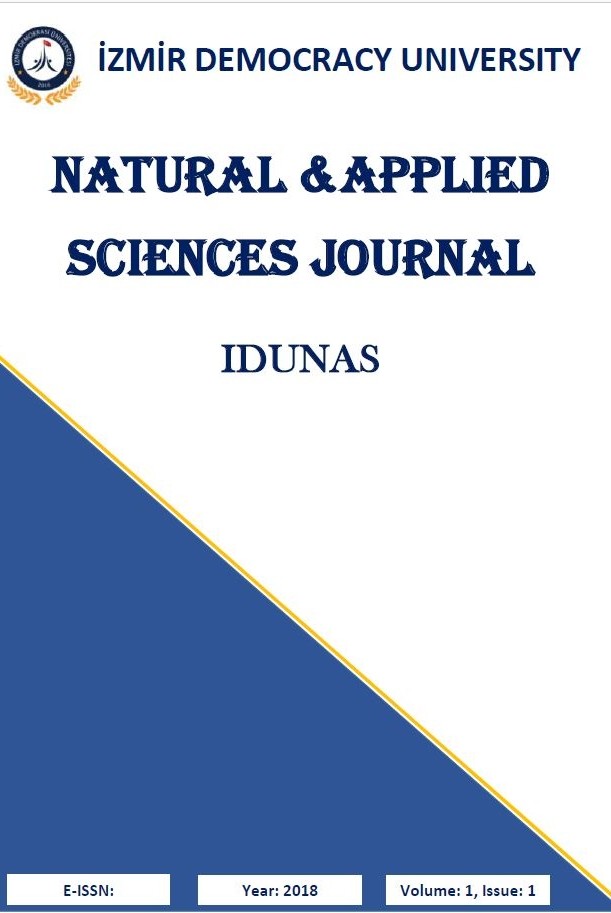A Bioactive dihydroflavonol-3-O-α-L-rhamnoside from Bracystelma togoense Schtlr
A Bioactive dihydroflavonol-3-O-α-L-rhamnoside from Bracystelma togoense Schtlr
___
- Bello, I.A., Ndukwe, G.I., Audu, O.T., Habila, J.D., 2011a. A bioactive flavonoid from Pavetta crassipes K. Schum. Organic and Medicinal Chemistry Letters 1, 14.
- Bello, I.A., Ndukwe, G.I., Audu, O.T., Habila, J.D., 2011b. A bioactive flavonoid from Pavetta crassipes K . Schum. Organic and Medicinal Chemistry Letters 1:14, 10–15.
- Britto, S.J., Bruyns, P. V, 2016. Three new species of Brachystelma from Tamil Nadu, India. Haseltonia 48–54.
- Bruyns, P. V, 2009. Three New Species of Brachystelma (Apocynaceae, Asclepiadoideae, Ceropegieae) from South Tropical and Southern Africa. SPIE.
- CLSI. Performing Standards for Antimicrobial Susceptibility Testing, Clinical and Laboratory Standards Institute, 2017:32, n.d. PL, 27 th. ed.
- Cushnie, T.P.T., Lamb, A.J., 2005. Antimicrobial activity of flavonoids. International Journal of Antimicrobial Agents 26, 343–356.
- De Britto, J., Soosai Manickam, V., Gopalakrishnan, S., Ushioda, T., Tanaka, N., 1995. Chemical and chemotaxonomical studies of ferns. Determination of aglycone chirality in dihydroflavonol 3-O-.ALPHA.-L-rhamnosides by 1H-NMR spectroscopy.
- Ekalu, A., Ayo, R.G., Habila, J.D., Hamisu, I., 2019. Phaeophytin and Triterpenoids from Brachystelma togoense Schltr , a Nigerian Medicinal Herb. Asian Journal of Chemical Sciences 6, 1–5.
- Jamshidi-kia, F., Lorigooini, Z., Amini-khoei, H., 2018. Medicinal plants : Past history and future perspective. Journal of Herbmed Pharmacology 7, 1–7.
- Kew Royal Botanical Gardens, 2019. Electronic Plant Information Centre (ePIC) [WWW Document]. URL http://epic.kew.org/index.htm (accessed 2.7.19).
- Kumar, S., Pandey, A.K., 2013. Chemistry and Biological Activities of Flavonoids: An Overview. The Scientific World Journal 2013, 1–3. https://doi.org/10.1016/S1572-5995(05)80065-1
- Medeiros, A.A.N., Medeiros, F.A., Queiroz, T.M., Tavares, J.F., Silva, M.S., Medeiros, I.A., 2010. Artigo rhamnoside from Pradosia huberi ( Ducke ) Ducke on rat isolated mesenteric arteries. Animals 20, 542–548.
- Niaz, S.I., Zhang, P., Shen, H., Li, J., Chen, B., Chen, S., Liu, L., He, J., 2018. Two new isochromane derivatives penisochromanes A and B from ascidian-derived fungus Penicillium sp. 4829. Natural Product Research 6419, 1–7.
- Ollerton, J., Masinde, S., Meve, U., Picker, M., Whittington, A., 2009. Fly pollination in Ceropegia (Apocynaceae: Asclepiadoideae): biogeographic and phylogenetic perspectives. Annals of Botany 103, 1501–1514.
- Taleb-Contini, S.H., Salvador, M.J., Watanabe, E., Ito, I.Y., Oliveira, D.C.R. de, 2003. Antimicrobial activity of flavonoids and steroids isolated from two Chromolaena species. Revista Brasileira de Ciências Farmacêuticas 39, 403–408.
- Xiao, J., Kai, G., 2012. A review of dietary polyphenol-plasma protein interactions: Characterization, influence on the bioactivity, and structure-affinity relationship. Critical Reviews in Food Science and Nutrition 52, 85–101.
- Xie, Y., Yang, W., Tang, F., Chen, X., Ren, L., 2015. Antibacterial activities of flavonoids: structure-activity relationship and mechanism. Current medicinal chemistry 22, 132–49.
- Xueyan, R., Jia, Y., Xuefeng, Y., Lidan, T., Qingjun, K., 2018. Isolation and purification of five phenolic compounds from the Xinjiang wine grape (Vitis Vinifera) and determination of their antioxidant mechanism at cellular level. European Food Research and Technology 244, 1569–1579. https://doi.org/10.1007/s00217-018-3070-z
- ISSN: 2645-9000
- Başlangıç: 2018
- Yayıncı: İzmir Demokrasi Üniversitesi
Biochips for Physical Exercise Studies
Neşe AKPINAR KOCAKULAK, İbrahim ÜNAL
Plasma Polymerized Films for Mass Sensitive Biosensors
Gizem KALELİ CAN, Selma MUTLU, Mehmet MUTLU
A Bioactive dihydroflavonol-3-O-α-L-rhamnoside from Bracystelma togoense Schtlr
